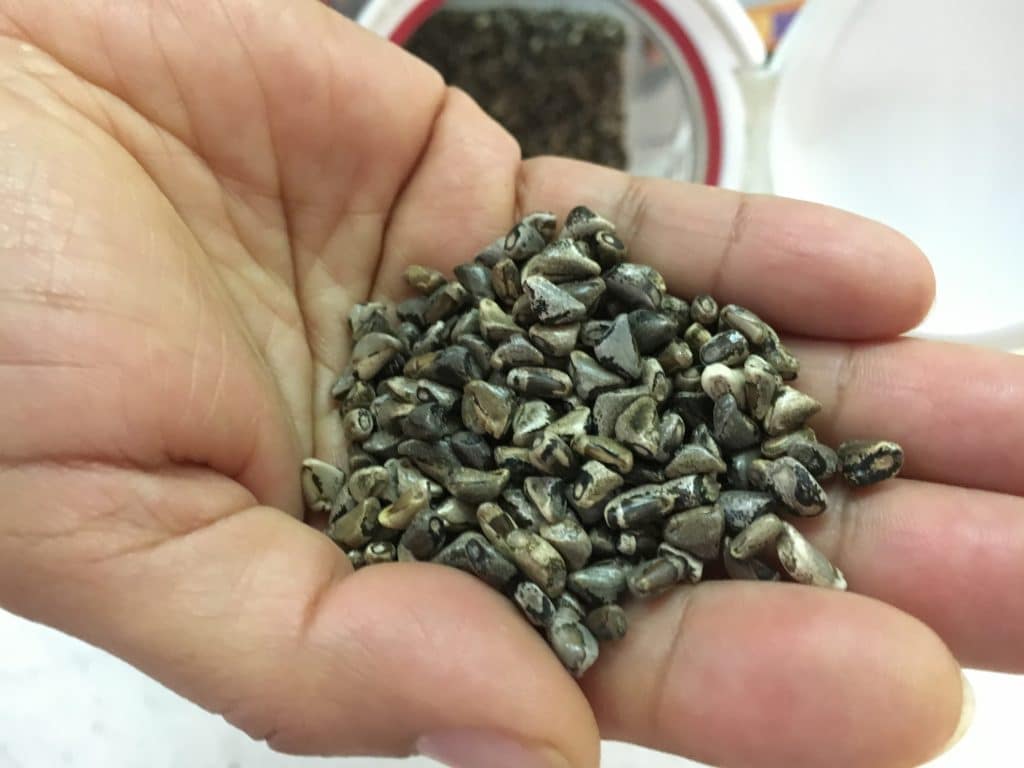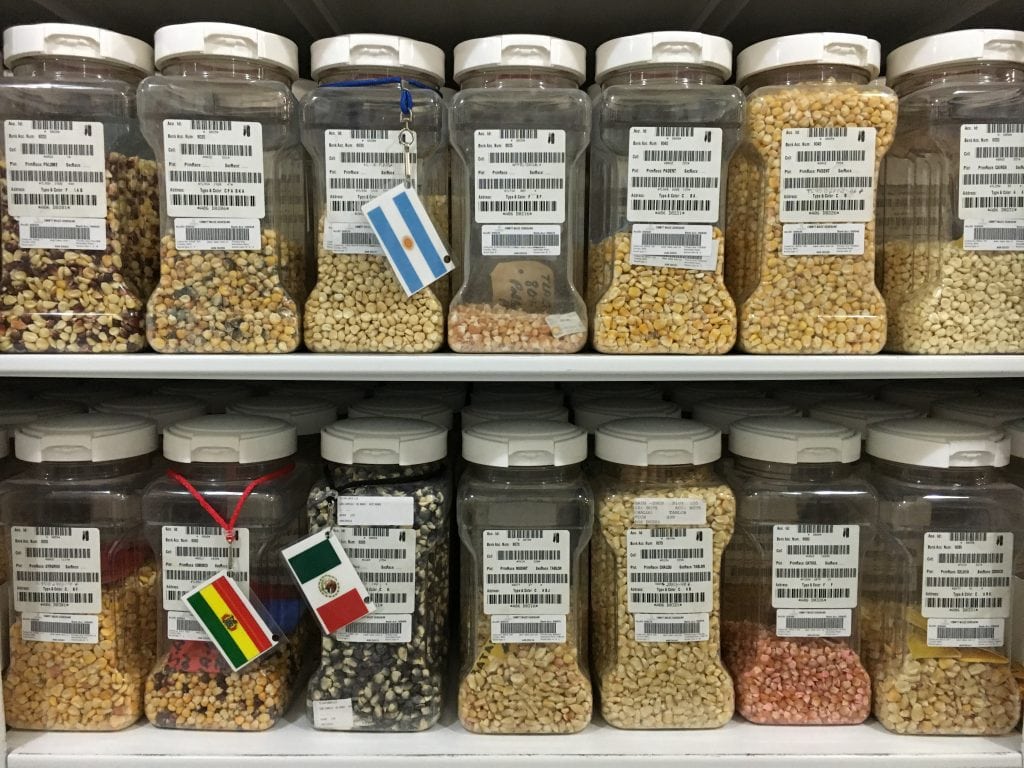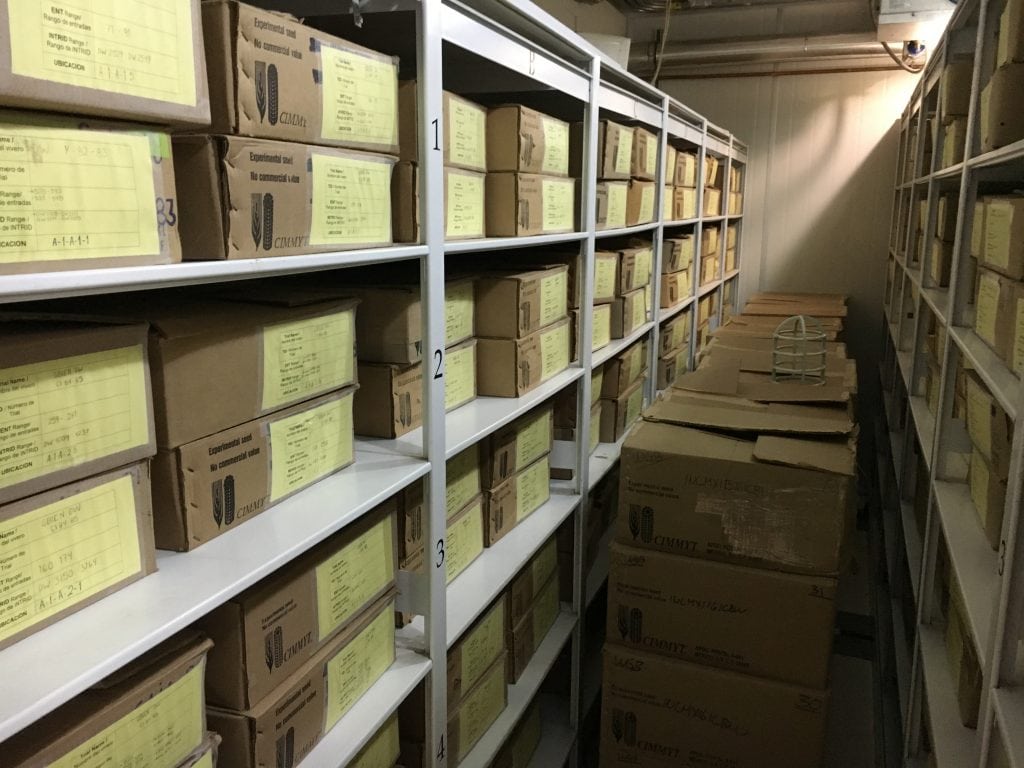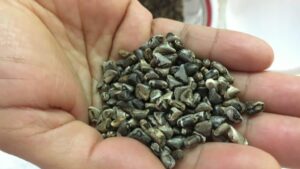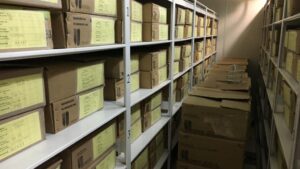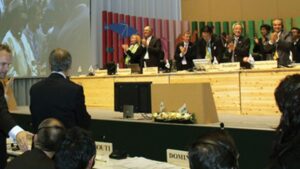What it takes for biotechnology companies to keep track of their genetic resources
In the previous edition of European Seed, we sat down with five experts in their fields about the struggles that a seed company goes through, and if there is any benefit at all to the Nagoya Protocol on Access and Benefit Sharing (ABS), which was adopted in 2010 and entered into force on 12 October 2014.
In our second article in this series, focusing on the biotechnology side of these regulations, we sat down with Dominic Muyldermans, Senior Legal Consultant to Croplife International; Paul D. Olson, Head of Germplasm Intellectual Property and Plant Variety Protection (PVP) for KWS SAAT SE; Frank Michiels, Plant Variety Protection & Clearance Manager for Bayer and Michael Muschick, Head of Germplasm Legal & IP for Syngenta
European Seed (ES): How have the various ABS regulations (IT & Nagoya) affected your company?
Dominic Muyldermans (DM): Various ABS regulations have imposed an additional burden on all activities of companies active in natural product research. First of all, the transaction cost of sourcing and using genetic resources has increased. Because of the inherently bilateral nature of the Nagoya Protocol every (prospective) use of a genetic resource potentially requires obtaining a permit and entering into an agreement (to agree upon the benefit sharing arrangements). Since natural product research often requires access to a wide variety of genetic resources from different countries of origin, this adds a burdensome complexity to the research and development process. In addition, the timelines for developing products resulting from the use of genetic resources have prolonged substantially, since it often takes years to get all necessary permits and secure all necessary contractual arrangements. Last, but not least, legal certainty has decreased since often material has been developed by previously using several genetic resources (often by a multitude of users, including pubic institutions or academia) of which the source or origin cannot be exactly defined or for which related information and documents cannot be obtained.
Paul D. Olson (PO): The regulations have affected decisions about which genetic resources we use in research. Genetic resources with readily documented prior informed consent and mutually agreed terms are preferred over those where documentation takes significant time and effort to acquire. Secondly, the various ABS regulations have increased internal bureaucratic burden to support research.
Frank Michiels (FM): As the Crop Science Division of Bayer is actively involved in plant biotechnology and plant breeding as well as development and sale of biological plant protection products we are greatly affected by the international and national legal ABS frameworks that developed over the years.
Michael Muschick (MM): Syngenta is using Genetic Resources in a number of different research projects. Therefore, the various ABS regulations had a significant effect on the research activities of the company. A difficult task was to explain to researchers and plant breeders that the access to R&D and breeding material is no longer free from obligations. In the breeding community, this was even more difficult to explain, since with the breeders’ exemption under the UPOV convention a system has been established that guaranteed facilitated access to even PVP protected breeding material.
ES: What changes did you have to make to be in compliance?
DM: Since countries can require prior informed consent (PIC) for the use of their genetic resources, companies will need to establish a material management system to ensure compliance with this required consent when sourcing material. In addition, companies will need to train researchers and setup standard operating procedures on how to handle, the sourcing, use and transfer of material in a manner that is compliant with all relevant ABS requirements. In addition, mutually agreed terms (MAT) defining the benefit sharing arrangements will need to be entered into, which requires the involvement of the legal and IP departments at an early stage.
In addition to the requirements for access (and benefit sharing), which are defined by national laws, the Nagoya Protocol also requires countries of use to setup compliance systems. The EU has harmonized compliance for use within the EU and has enacted Regulation 511/2014 which establishes a due diligence system. This due diligence system obliges everybody who utilises genetic resources (as defined) to seek, analyse, declare, transfer and keep all relevant information about all genetic resources which are utilised in its research and development process. In order to do so, a company will need to setup a track and trace system for the genetic material and all information related thereto. Such a performing material and information management system requires a lot of time and resources from many departments.
PO: In 2014, in response to the growing complexity of ABS legislation, KWS conducted an inventory of genetic resources that our researchers were already using. Then KWS designated an in-house expert and identified relevant colleagues globally on the topic to:
1) Thoroughly understand the legal requirements where we do research and business,
2) Establish a systematic approach to document the exchange and use of genetic resources, and
3) Familiarize breeders and lab researchers with the new requirements.
MM: The understanding and analyses of the different laws in different countries is the first activity and indeed challenging. The complexity and uncertainty in many of these laws is indeed complicating the understanding and interpretation. Company employees need to be trained, relevant information systems as well as track and trace systems need to be established or extended throughout the entire company. It needs to be stated that the efforts and investments should not be underestimated.
FM: We continuously work to understand, analyze and comply with the requirements in the regulations on genetic resource use in multiple countries relevant to our global life sciences business. Our internal policies, procedures and databases also help ensure compliance, and we have provided training and awareness building of ABS with employees. In the case of ABS, implementation is complex because some of the laws and regulations are still evolving. Laws are also generally not harmonized between countries, whereas genetic resources are often used across several countries.
ES: Are there specific aspects for the biotech or crop protection side that are different from the seed side?
DM: Two issues, which are of specific relevance for the biotech sector, are derivatives and digital sequence information.
Article 2(e) of the Nagoya Protocol defines a derivative as “a naturally occurring biochemical compound resulting from the genetic expression or metabolism of biological or genetic resources, even if it does not contain functional units of heredity.”
The Nagoya Protocol Article 2(e) definition of derivatives clearly excludes compounds which do not occur naturally as a result of the genetic expression or metabolism of biological or genetic resources, as well as compounds which result from the modification of derivatives (e.g. through human intervention) as these cannot be said to occur naturally as a result of the genetic expression or metabolism of biological or genetic resources.
If the product of a modification of a derivative would be itself considered to be a derivative, this would have huge implications for the future of the bio-based economy. Studies are regularly made on many everyday products, e.g. coffee, milk, cheese, beer, bread, furniture (wood), or cellulose. If such products are considered to be derivatives and become subject to ABS obligations, it would bring within the scope of ABS regulations whole new sectors and fields of research which have not been considered so far in the discussions.
Since it is a necessary condition for utilisation that one conducts research and development “on the genetic and/or biochemical composition of genetic resource”, a derivative should only be covered if there is an ascertainable level of continuity between the production of the derivative from the genetic resource and the research and development activities conducted on the derivative so obtained.
The Conference of the Parties to the Convention on Biological Diversity decided on 17 December 2016 that any potential implications of the use of digital sequence information on genetic resources should be considered.
It needs to be stressed that the question of whether digital sequence information obtained from a genetic resource should be considered to be part of the definition of genetic resources was already discussed during the negotiations of the Nagoya Protocol. Importantly, the definition of a “genetic resource” – as provided in Article 2 of the CBD and referred to in Article 2 of the Nagoya Protocol – is “genetic material of actual or potential value” with “genetic material” being defined as material of biological origin containing functional units of heredity. Functional units of heredity are usually referred to as genes. The term genetic resource therefore covers materials such as organisms, or parts thereof, in which genes are present. In other words, the term refers to tangible genetic material, which must physically contain genes. It therefore follows from the definition of genetic material that intangible digital sequence information cannot constitute a genetic resource as defined by the CBD.
Adhering to the literal understanding of the definition of genetic resource, as outlined above, however, does not preclude benefit sharing from products developed using digital sequence information. Information generated by utilising a (physical) genetic resource might be covered by an agreement (MAT) between the user and the provider of the genetic resource. This may include conditions on how the intangible digital sequence information can be used and may include an obligation to make the data public or keep it private. In such case, a user (and all entities further down the value chain) will have to comply with the contractual obligations related to digital sequence information pursuant to the MAT, including potential benefit sharing provisions.
In addition, it needs to be stressed that freely accessible digital sequence information encourages innovation through natural product research, stimulates scientific collaboration and promotes publications. Exchange of digital sequence information is also essential to achieve the objectives defined in Article 12 of the CBD, which are to promote and cooperate in scientific advances in biological diversity research and to develop programs for scientific and technical education, as well as promote technology transfer, collaboration and capacity building. The draft “Cancun Declaration on Mainstreaming the Conservation and Sustainable Use of Biodiversity for Well-Being” recognizes this by a commitment to “promote the generation and use of biodiversity-related knowledge and information and make it readily available to society to support decision making at all levels.”
To include digital sequence information in the definition of genetic resources under the Nagoya Protocol would not only increase legal uncertainty but also attach indefinite access and benefit sharing obligations to the use of such information. In addition, the resulting system would be unworkable, because monitoring and checking compliance would be extremely burdensome or even impossible to achieve.
MM: In the seed sector, the result of any crossing is again a genetic resource. This adds up to highly complex systems and can sum up benefit sharing obligations.
[tweetshare tweet=”Accessible digital sequence information encourages innovation through natural product research.” username=”EuropeanSeed”]
PO: The types of genetic resources, types of providers, and complexity of systems to track the genetic resource use are more diverse in biotech than in the seed side. But the number of genetic resources used in plant breeding is much larger, and the number of products where Due Diligence Declarations may be required is much greater than in biotech.
FM: The most distinguishable differences are between crop protection products as derivatives of genetic resources and seeds, which may or may not include improvements using biotechnology.
The seed sector conserves old varieties, as source material for future breeding, and it has the International Treaty on Plant Genetic Resources for Food and Agriculture (ITPGRFA) that can offer global harmonization, and legal certainty and that so far does not impose specific additional costs during R&D phases.
ES: There is still a lot of unclarity on the regulations. How should this be solved? What do you need to arrive at legal certainty?
MM: The laws and regulations today are quite general and can include everything. It is therefore highly important to refine the regulations and consider single research steps and research activities. Furthermore, a list to define clearly which genetic resource is within or out of the scope of national ABS laws would be extremely helpful. It might even be worth to consider completely alternative systems to the current ones.
DM: It is of key importance to clearly define the material scope of utilization. An activity only comes under the scope of ABS regulations if it involves utilization, which is defined as “to conduct research and development on the genetic or biochemical composition of genetic resources, including through the use of biotechnology.
Utilisation is more than just gathering knowledge, and requires further uses to be developed from that knowledge by conducting research and development on the genetic or biochemical composition of this genetic resource. A key example in this regard is the sequencing or screening of biological material for the presence of interesting characteristics, which normally involves access to the material, but in principle not its “utilisation”. A project typically starts off with thousands of samples of different genetic resources, all of which have been accessed and screened for the presence of a characteristic. However, most of these samples will turn out not to be further used for product development. Only those product leads that are actually used for further product development are subject to “utilisation” within the meaning of ABS regulations (regardless of any specific obligations in the MAT).
PO: From today’s perspective, it seems that only a few court cases could help clarify points of legal uncertainty. Which is unfortunate, because those may be years into the future and will be costly to the parties involved.
Rather than be distorted by partisan or nationalist interests, the modification of the ITPGRFA’s Standard Material Transfer Agreement (SMTA) and the government-sponsored consultations on Nagoya implementation need to simultaneously and uncompromisingly address these overriding principles:
- Biodiversity should be conserved
- Biodiversity must be accessible to benefit humankind
- Plant breeding enhances and expands biodiversity and is a major form of benefit sharing.
[tweetshare tweet=”Plant breeding enhances and expands biodiversity and is a major form of benefit sharing.” username=”EuropeanSeed”]
FM: Countries should publish their legislation on the Clearinghouse website to facilitate access and use. Ideally, greater harmonization among countries is required to support more efficient and effective genetic resource use. We also need clarity on scope, and we worry about proposals to expand scope with derivatives, and information about genetic resources. To arrive at legal clarity there needs to be accessible legislation and a timely issue of permits, which could be facilitated by online tools.
ES: Overall do you think there is a benefit to all these regulations? Or is it just a burden?
DM: A balanced application of ABS requirements could help in safeguarding biodiversity conservation and at the same time secure access to genetic resources thereby enabling continued sustainable use of genetic resources. An overly broad application of ABS requirements by applying a protectionist view on access and a unilateral view on benefit sharing, detached from economic realities, can however stifle natural product research, thereby substantially reducing the value of genetic resources and the incentive for biodiversity conservation.
[tweetshare tweet=”Overly broad application of ABS requirements can stifle natural product research.” username=”EuropeanSeed”]
In addition, it will be essential to ensure a balance between all different legal systems that provide for proprietary rights, both from a public and a private point of view, on biological material. Sovereign rights over genetic resources can be qualified as public intellectual property rights and need to co-exist with private rights, in particular private intellectual property rights. It is of key importance to ensure that an effective scope of protection by private intellectual property rights is not undermined by a broad application of public intellectual property rights. In that regard, it is important to note that whether material is protected by an intellectual property right (e.g. a patent) or not does in principle not have an effect on the ABS obligations of a user of genetic resources. Intellectual property rights are private proprietary rights granted pursuant to relevant intellectual property laws, while obligations for ABS derive from the public sovereign rights of States (de facto establishing a public proprietary right) over their genetic resources. In addition to the rights obtained pursuant to the grant of an intellectual property right, the owner might also have certain obligations under the relevant rules on ABS due to the use of a genetic resource. There is, in principle, no conflict between the affirmation of the sovereign rights of a State over its genetic resources and the recognition of the private rights held by a non-state actor pursuant to a granted intellectual property right (even in cases of an intellectual property right being granted for an invention involving the use of a genetic resources – this does not infer such an intellectual property right could claim the genetic resource as such).
PO: The principle behind genetic resource ABS regulations is justifiable, and good legislation could lead to improved access and benefit sharing. However, current ABS legislation with so many legal uncertainties could create the opposite outcome. This means future products may be less diverse. Furthermore, unclear or excessive regulation can make it more difficult for breeders to establish or expand a business.
ABS is not a burden, but an obligation that the seed industry has taken seriously and lived for many years. The initial value shared through the Breeders Exemption is significant – with a major global impact. In addition, private industry donates substantial funds for local genetic resource conservation and capacity building around the world.
Moreover, with current regulations, more governmental and business resources may go to administration of ABS bureaucracy rather than biodiversity conservation and biodiversity expansion via breeding. In many countries at present, the agriculture ministry (in charge of ITPGRFA) and environmental ministry (in charge of Nagoya) could collaborate more effectively in implementing ABS legislation.
FM: The three overall objectives of the CBD (conservation, sustainable use, and sharing of benefits from utilization) are very valuable, but the implementation measures that are currently taking shape could be more efficient and effective.
MM: Regulatory systems must be simple, clear and need to function. This is unfortunately not fully achieved with the current ABS systems. Delays in government approvals of several years in acquiring R&D material, as experienced today, will have a very negative effect for all parties involved. Therefore, a discussion regarding different, simplified access and benefit sharing systems will be necessary – a number of good ideas are already on the table. It is therefore of utmost important that government officials and researchers from the public and private sectors are intensively discussing on the best way forward.
ES: How do you see the future, let’s say in 20 years from now?
FM: Human population will be bigger, with increased pressure on many limited resources. Even more than today, we will have to understand, and actively manage and maintain the environment we live in. Science and innovation is part of the solution, and genetic resources are key.
[tweetshare tweet=”Science and innovation is part of the solution, and genetic resources are key.” username=”EuropeanSeed”]
As a global contributor, we remain actively engaged in enabling sustainable use of genetic resources, supported by simplified, effectively implemented and harmonized national policy that delivers on the global goals of the Convention on Biological Diversity.
MM: The future in 20 years is always difficult to predict. There might be very beneficial positive developments, but there are also very damaging negative scenarios. It is therefore relevant to continue with an open discussion on all sides.
PO: There are two potential scenarios. If ABS rules develop without stakeholder input, then legal uncertainties around genetic resource access will continue to increase. This could turn many gene bank collections into museums of unaccessed genetic resources. We also need to promote basic biological research by ensuring that DNA sequence information does not become highly regulated. In a more positive future, as more predictable approaches to ABS emerge to truly enable access, use and enhancement of genetic resources, countries will enjoy even more benefits from improved agriculture. Improved agriculture will also help countries better play their traditional role in protecting biodiversity and making resources available for the benefit of humanity.


